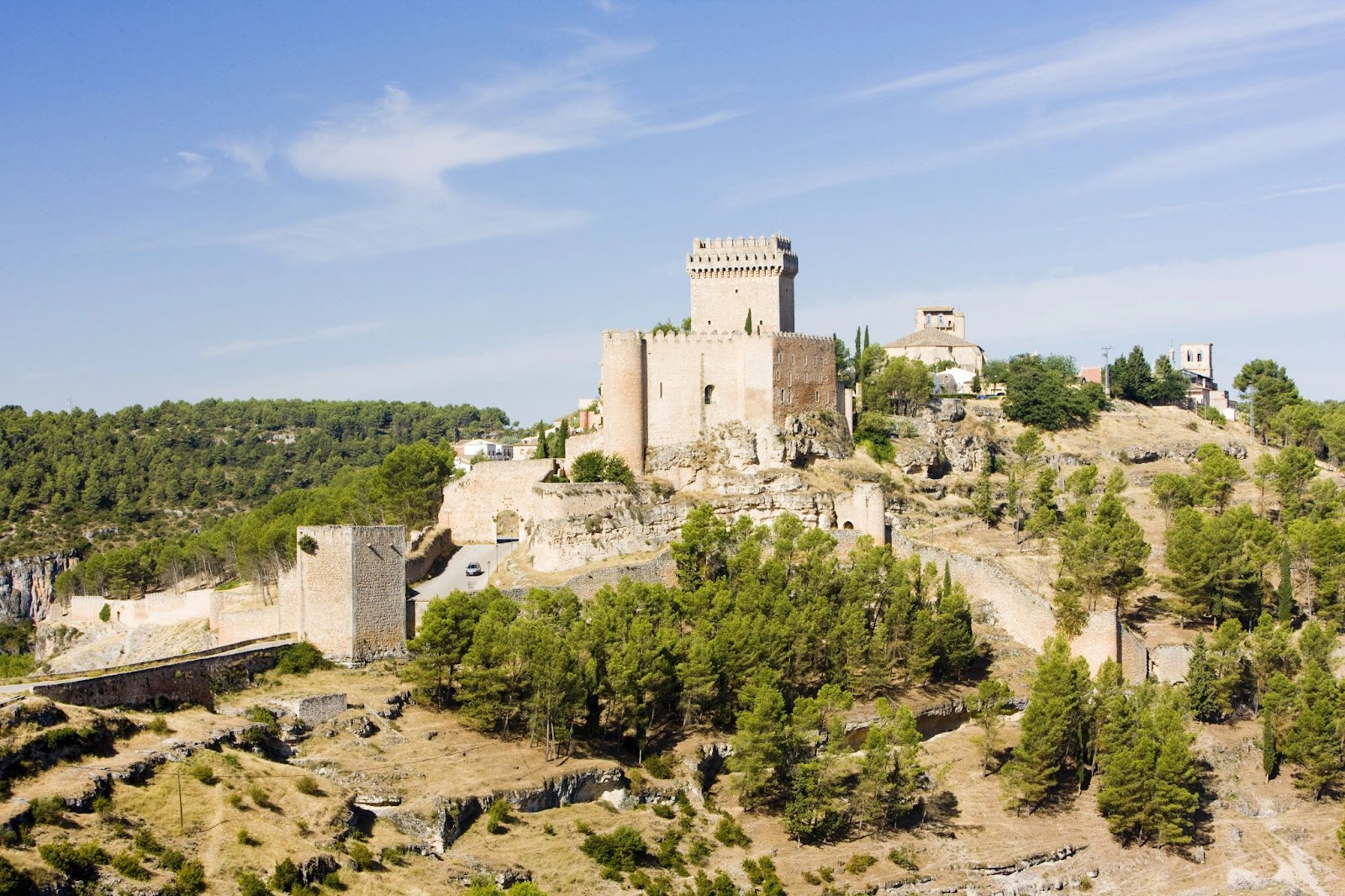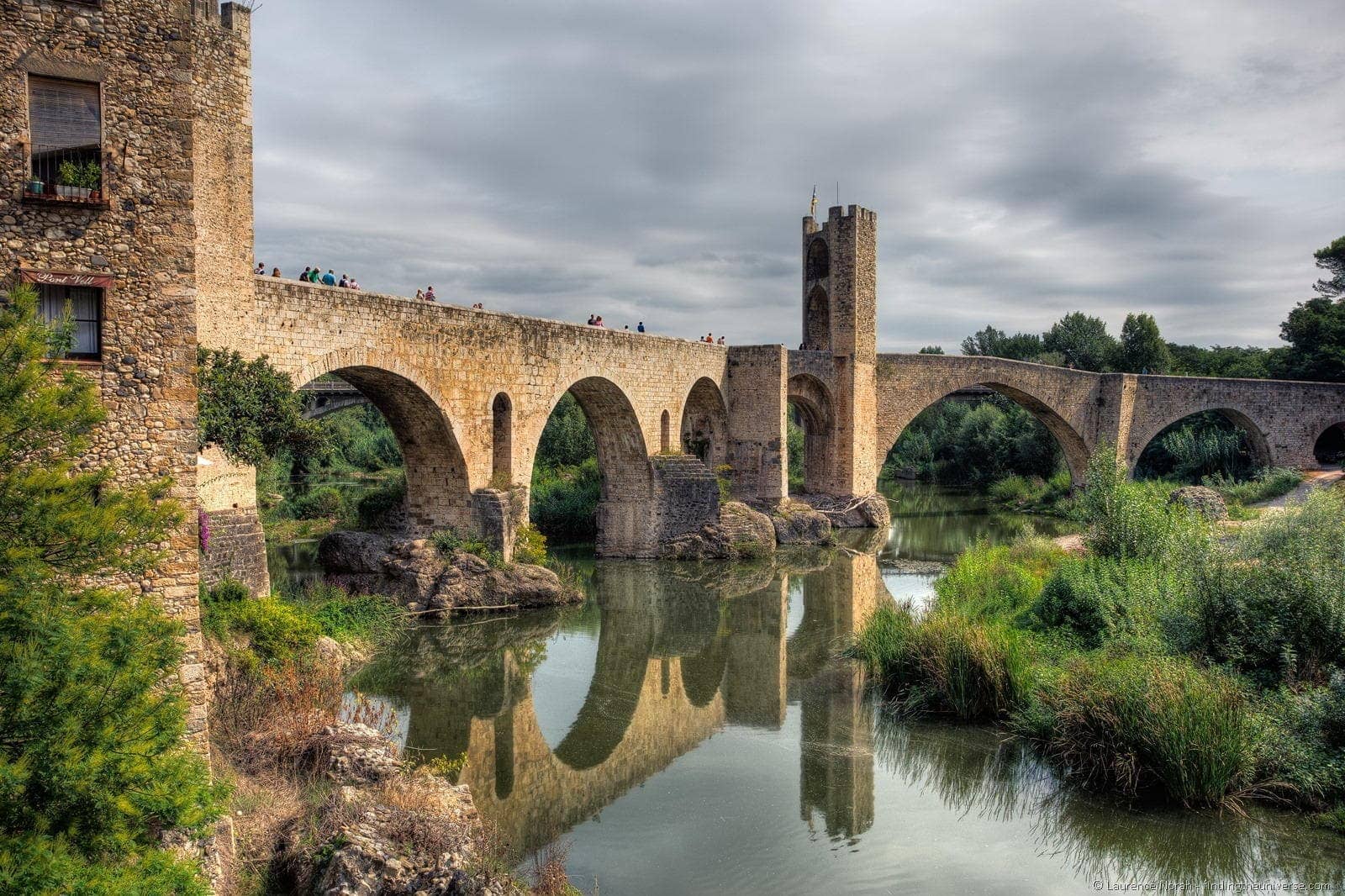If you have been reading my blog for a while now, you probably realize one thing: I’m a huge fan of a busy city break or a long weekend of pampering.
Yes, a bustling metropolis like Seattle or Las Vegas never fails to capture me. Once in a while, though, my body and mind crave a complete change of pace, a place to escape from daily life and forget about the workload temporarily.
In times like this, can you guess where I’d head to? One of the epic walled cities in Spain!
I’m not talking about some sleepy hollows or museum-like places. They are thriving communities where life goes on, children go to schools, and adults wake up every morning for work. Yet, they still maintain a special connection with the past through these medieval walls – ones that stand tall as proof of the Mediterranean country’s heroic history.
Read on, and let Enjoyfuntrip take you to these ancient towns, where time seems to pass slower or has stopped altogether!
Tracing Back The Old Times: Why Do These Walls Exist?

In case you are wondering, “Why do some Spanish cities and towns still maintain their medieval walls?”… That’s an excellent question! Manga fans are all familiar with Maria, Rose, and Sina – three colossal walls built to protect the last of humanity in Attack on Titan. I can say for sure: Hajime Isayaka must have taken some inspiration from Albarracin or Tossa del Mar.
Well, don’t chaff at it yet – defense walls also surround these cities to protect the people inside! But not against the titans, of course: The Romans invaded Spain for 700 years, and then Arabs took over the land for another 800. During these eras, Christian monarchs waged constant wars on the Arab invaders and saw certain success.
Thus, most of the towns in medieval Spain were fortified with stone walls, which were constructed by the people to defend against the Arabs. The Spanish take great pride in these walls because, to them, they are historical witnesses, reflecting the tangible richness of Spain’s past. Not in every city can you find this cultural heritage, though…
Walled Cities In Spain – 6 Of The Best
From the 16th century onwards, most towns and cities in Spain started to expand beyond their borders due to economic and population growth. The walls then became obsolete and, in most cases, were taken down.
Yet, in the destinations below, city walls are still standing today. Some are tourist attractions; others are small, off-the-beaten-path, and known only to the locals.
Walled Cities In Spain – Alarcón (Cuenca)
Alarcón is a real hidden gem. On my first trip to Spain, we had to make several turns, then passed through an empty and flat land to find the village. “Are you sure we won’t get lost?”, asked my friend Amy, and I was sharing the same thought. There was nothing in sight except golden grasses and scrub pines.
Then (*inserts Spanish dramatic guitar riffs), out of nowhere, the epic sight of a stone tower appeared on the horizon. Taller and taller it rose, and we crammed our noses against the car window, ooh-ing and ahh-ing.
The town sits on stilts on a rocky cliff above the river, which is quite challenging to access. During the 8th century, however, this was a critical defensive position. The Castle of Alarcón was built as a result. This structure, though more miniature than many castles in Spain, still appears intimidating with its formidable location and breathtaking beauty. Surrounding the castle and most of the town are stone walls and 5 turrets. Thus, entering Alarcón will give you the impression of stepping back through the centuries.

Aside from the castle, tourists can stroll through the medieval streets to admire the main square with its old town halls and other ancient buildings, such as the San Juan Bautista Church. And trust me when I say wandering through the pavements of Alarcón has to be one of the best things to do here. You would want to take your time: The exquisite stonework of the streets, dotted with lovely row houses, will lull you into a state of tranquillity.
Due to its tricky location, the small town of Alarcón is yet to pop up among the top destinations in Spain. To me, though, it’s such an amazing finding: The time-worn stone walls, the delicately-paved roads, and the charming Medieval buildings – all of these little touches lend Alarcón a quality yet artisan feel that you won’t see anywhere in the world.
Avila (Castile And Leon)
Unlike Alarcón, Avila has been listed as a national monument since 1884 and is well-loved by tourists worldwide. If you walk the perimeter – which spans over 2,500m, boasting 2,500 battlements and 9 majestic gates – you will know why.
The ancient crenelated walls here are truly a cultural heritage: Dating back to the 12th century, they were constructed to defend Avila against the Moorish invasions. At that time, tensions were rising between the country’s Muslim South and the Catholic North, and the city stood right on these two factions’ dividing lines. After surviving countless raids, the walls are almost perfectly preserved today, contributing to Avila’s timeless appeal.
But they are not the only thing that makes the city famous. Inside and outside the gates, you will find the other reasons – numerous churches as this is where Saint Teresa worked to reform Carmelite convents. When you venture through the walls, churches, and museums, make sure to stop by one of the bakeries serving “yemas,” a traditional Spanish sweet made in honor of the Nun.
What to do in Avila, Spain
Walled Cities In Spain – Albarracín (Aragon)
So, yes, Avila is the most sought-after destination when it comes to the oldest cities in Spain. If someone asks me, though, I wouldn’t say it’s the prettiest. You can argue all day, but Albarracín, with its gorgeous watch towers and pink-hued medieval houses, has already won the top spot in my heart.

Located about three hours from Madrid, the ancient city fortified by medieval walls sits on a small hillock above the Guadalaviar River. It is home to about a thousand residents. Albarracín is made up of wonderful winding streets set into the slope of a hill, a magnificent castle, lovely wooden beams on all the ruddy-colored houses, and the walls— I love the walls! Minimal reconstruction has been done to Albarracín’s defensive walls, and as a result, they are the best-preserved example of their kind in all of Spain.
To track up to the perimeter on foot, you will need a suitable pair of shoes that can handle some rough terrain. It’s not the perfect destination for people with limited mobility, but if you are agile, the vista from the top will be well worth the effort!
Besalú (Catalonia)
Besalú possesses a long tale of being the most prominent town in Catalonia, with excessive political and social influence. Located by the Fluviá’s riverbank, its traces of settlements in the land even date back to the time of the Romans. It’s believed that the name Besalú comes from the Latin word “bisuldunum,” which stands for “fort on a mountain between two rivers.” This refers to the historic fortress, which is believed to have stood on the site since the 10th century.

During the old times, Besalú is an independent state. Nowadays, it’s just a dreamy, beautifully-preserved small town in Catalonia, but all of the medieval flavors remain. Without a doubt, its trademark is Pont Veil – the ancient bridge crossing River Fluvia. Due to the river’s rock, which is used to support the pillar, the bridge has an angular design. It also has 8 unequal arches that leap from rock to rock and stretch 105 meters.
Walled Cities In Spain – Dalt Vila (Ibiza)
Here comes another World Heritage Site! Standing tall on a tiny mountain by the sea is the fortified medieval Dalt Villa, directly translated to “Upper Town.” Originally named “Ibosim,” Dalt Vila held a strategically essential role in the Mediterranean. The last addition was the Renaissance defensive walls encircling it, which were built by Kings Charles I and his successor Philip II to protect against the French and the Ottomans.
Nowadays, this vast melting pot of history has become every photographer’s dream. You have several options to tour around Dalt Vila, but for me, the best way to explore the narrow, steep, and winding cobblestone alleyways is on foot, with a good pair of shoes. You will fall in love with the place as magnificent views unfold in front of your eyes.
A walking tour down the city fortified by medieval walls
Upon passing the gateway, you will find yourself on the Plaza de Vila, or main square, where numerous art galleries, restaurants, and antique stores reside. Keep left on Calle Sa Carrosa, and you’ll reach the Santa Lucia Bastion – the largest bastion in the Old Town with stunning views over the harbor. Along the way, you can spot a bronze statue of Isidor Macabich – the first Ibizan Priest to conduct extensive research on the city’s past. Many streets here are named after him.
Tossa del Mar (Catalonia)
Are you planning for a beach getaway but also want to visit one of the historic cities in Spain? Tossa de Mar in Costa Brava is the ideal destination! This charming town is set on top of a hill, yet it stays close to some of the most stunning beaches. What is the best thing? It isn’t overrun with tourists like other seaside resorts nearby! Even if you come during the high season, you won’t have to fight for a spot.
“Tiny but mighty” is the best way to describe Tossa de Mar – a small town with a fascinating past. It developed around Tossa Castle at the end of the 11th century. As its population rose, the citizens constructed battlements and defensive walls to protect themselves from pirates and invaders.
Over the year, the town expanded beyond the walls, and many people left searching for better opportunities. As its residents were gone, artists and intellectuals were drawn here, inspired by Tossa de Mar’s romantic charm.
Dolores – my Spanish friend – revealed that the locals love Tossa de Mar so much, perhaps even more than Avila or Dalt Vila. Indeed, this region has so much to offer. With green mountains, lush forests, and deep-blue beaches, it deserves a top spot on any Europe bucket list. Its Old Town is still surrounded by grandiose walls and watch towers.

Wonders Behind The Walls
Does that make you want to learn some basic Spanish and book your flight right now? Passing through the archways of these walled cities in Spain is like going through a time portal. It takes us to the Renaissance period – a time when glorification, romance, and art upheavals collide.
As you wrap up the trip, you will find yourself casting one last adoring gaze at the city. From the age-old walls against the Mediterranean blue sky to the smoothly worn stones that lined the streets – all of them are a part of the authentic Spanish medieval legacy. They will stay with you for a long to go.

